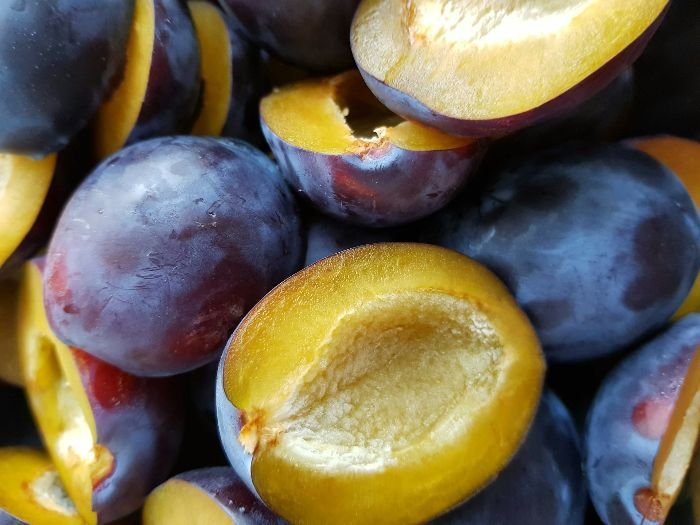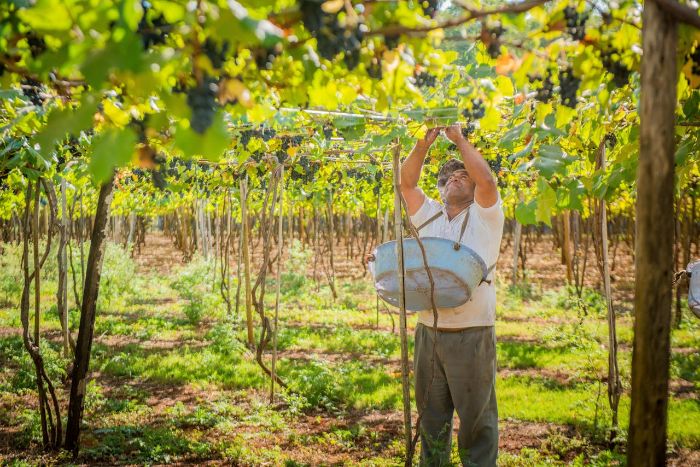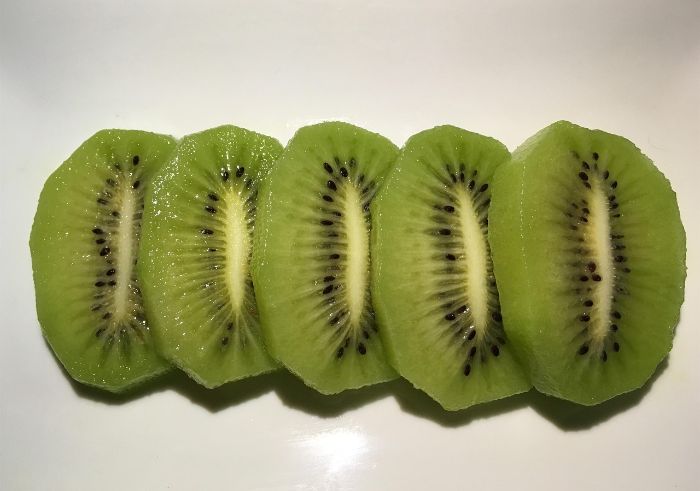Are you looking for a tasty and healthy food? Homegrown plums are perfect. They taste great and are good for your health. We’ll talk about how plums are full of fiber, vitamins, minerals, and antioxidants.
We’ll also show you how to grow your own plum trees. This way, you can pick fresh, chemical-free plums from your yard. Enjoy the best taste and health benefits of plums grown at home!
Key Takeaways:
- Homegrown plums offer a wide range of health benefits.
- Plums are packed with fiber, essential vitamins, minerals, and antioxidants.
- Growing your own plum trees ensures fresh, pesticide-free produce.
- Plums can improve digestive health, support heart health, and boost immune function.
- Stay tuned to learn how to successfully grow and care for your own plum trees!
Table of Contents
Nutritional Benefits of Plums
Plums are full of nutrients that help keep you healthy. They aid digestion and give you important vitamins and minerals. Adding plums to your meals is a smart move for your health.
High Fiber Content for Digestive Health
Plums are high in fiber, which is great for your gut. This fiber makes your stool bulkier, helping you stay regular and preventing constipation. It keeps your digestive system running smoothly, easing discomfort and boosting efficiency.
Rich in Vitamins and Minerals
Plums taste great and are full of vitamins and minerals. They’re loaded with vitamin C, an antioxidant that boosts your immune system and fights off stress. They also have a lot of vitamin A for your eyes and minerals like potassium and manganese for your body.
Antioxidant Properties
Plums have antioxidants like anthocyanins, which make them colorful. These antioxidants protect your body from harmful free radicals and lower the risk of chronic diseases. Eating plums often can help fight oxidative stress and inflammation, keeping you healthy.
Plums are packed with fiber, vitamins, minerals, and antioxidants. Eating this tasty fruit can make your digestion better, support your immune system, and improve your overall health.
Detailed Nutritional Profile of Plums
Plums are tasty and good for your health. They have a lot of vitamins and minerals. Let’s look at the vitamins and minerals in plums. We’ll also see how fresh and dried plums compare.
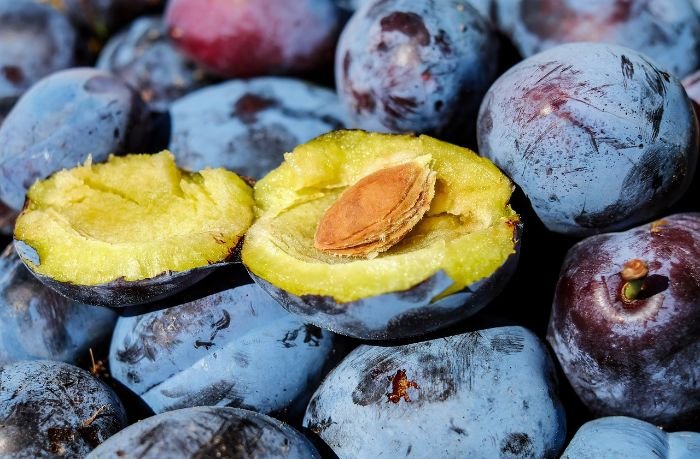
Essential Vitamins in Plums
Plums are full of vitamins. Vitamin C is one of the main vitamins in plums. It helps keep your immune system strong and fights off cell damage.
Plums also have vitamin A. This vitamin is good for your eyes and helps your immune system work right.
Key Minerals in Plums
Plums have a lot of minerals too. They are a great source of potassium. This mineral keeps your blood pressure in check and helps your heart.
Plums also have manganese. This mineral is important for strong bones and making energy in your body.
Comparing Fresh and Dried Plums
Fresh and dried plums both have health benefits. But drying changes their nutrient levels. Dried plums, or prunes, have more fiber, vitamins, and minerals.
Fresh plums have more water, which helps with hydration. The exact nutrients in plums can change based on the type and ripeness. Still, eating plums gives you important vitamins, minerals, and antioxidants for good health.
Health Benefits of Including Plums in Your Diet
Plums are tasty and good for your health. Eating plums can make your digestion better, keep your heart healthy, and boost your immune system.
Promoting Digestive Health
Plums are full of fiber, which is key for a healthy gut. This fiber helps you go to the bathroom regularly, stops constipation, and keeps your gut happy. Plums can also help with bloating and indigestion.
Supporting Heart Health
Plums are good for your heart. They have compounds that lower cholesterol and cut down heart disease risk. Eating plums often can help keep your blood pressure in check and make your heart work better.
Boosting Immune Function
Plums are full of vitamins and antioxidants that help your immune system. Vitamin C in plums makes your immune system stronger and fights off infections. The antioxidants in plums also fight off bad free radicals and lower stress, keeping you healthy.
Adding plums to your meals is a tasty way to get lots of health benefits. You can eat them fresh or dried. Plums are full of nutrients that help your digestion, heart, and immune system.
Preparing to Grow Plums in Your Garden
Before you start growing plums, you need to prepare. This guide will help you pick the right plum types, understand soil and climate needs, and find the best spot for your trees.
Choosing the Right Plum Varieties
Think about taste, size, and disease resistance when picking plum types. Each variety has its own flavor, from sweet to tart. Popular ones include Santa Rosa, Methley, and Stanley. Look into each variety’s traits and needs to pick the best for your garden.
Ideal Soil and Climate Conditions
Plum trees do well in soil that drains well and is rich in organic stuff. They like a pH of 5.5 to 6.5. Test your soil and fix it if needed. Plums need full sun for at least six hours a day. If your area has cold winters, pick plum types that can handle the cold.
Site Selection and Preparation
Choose a spot for your plum trees with good air flow and protection from strong winds. Don’t pick low spots that might freeze. Before planting, clear the area of weeds, rocks, and debris. Use a fork or tiller to loosen the soil, then add compost or manure. This makes the soil better for your plum trees.
Planting Plum Trees
If you want to grow your own plums, you need to plant them right. The key to success is knowing when and how to plant. We’ll show you how to plant plum trees for the best growth and fruit.
When to Plant Plum Trees
Planting plum trees at the right time is key. Do it in late winter or early spring, before buds form. This lets the roots get ready for the growing season. Planting at this time helps your plum tree grow strong.
Proper Planting Techniques
Here’s how to plant plum trees correctly:
- Pick a healthy plum tree from a good nursery. Choose one with a straight trunk and strong branches.
- Dig a hole big enough for the tree’s roots. It should be twice as wide as the root ball and deep enough so the tree is at the same level as in the nursery.
- Put the tree in the hole and fill with soil, pressing it around the roots to get rid of air pockets.
- Water the tree well to settle the soil and give the roots moisture.
Make sure to space your plum trees as recommended for good pollination and fruiting.
Initial Watering and Mulching
After planting, keep your plum tree moist and protected. Water it deeply and often, keeping the soil moist but not too wet. Put organic mulch around the tree, a few inches from the trunk. Mulch keeps the soil moist, stops weeds, and controls soil temperature.
Adding images to your blog makes it more interesting. Here’s a picture of someone planting a plum tree. This shows the right way to plant and care for plum trees.
Caring for Your Plum Trees
Watering and Irrigation Needs
Proper care is key for your plum trees’ health and productivity. Make sure they get enough water, especially when they’re young. Water them often during dry times to keep them hydrated and growing well.
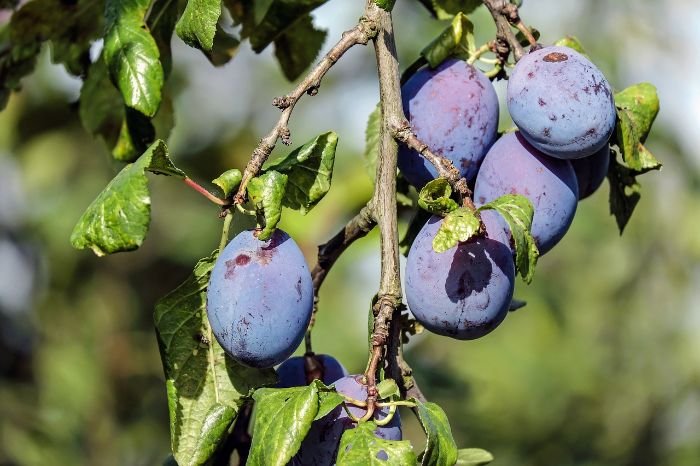
Irrigation systems like drip irrigation or soaker hoses help. They give the trees steady water right to their roots.
Fertilization and Soil Management
Watering is just part of it. Fertilizing and managing the soil are also vital. Use organic stuff like compost or manure to make the soil better. Also, give them fruit tree fertilizer during the growing season.
Do a soil test to see what nutrients they need. Keep the soil’s pH right, between 6.0 and 7.0. Plum trees like soil that’s a bit acidic to neutral.
Pruning for Health and Productivity
Pruning is super important for plum trees. Do it in late winter or early spring, before buds open. Pruning helps with:
- Removing dead, damaged, or diseased branches to stop diseases and pests.
- Keeping the tree the right size and shape for good air and sunlight.
- Helping the tree make more fruit by thinning out branches.
Use sharp tools for clean cuts just above buds or branch joints. Don’t cut into the collar or leave stubs. Check your trees often for diseases or pests and fix any problems fast.
Managing Pests and Diseases
Plum trees are lovely in any garden but face challenges. Pests and diseases can harm their health and fruit. It’s key to use good management strategies. Knowing about pests, preventing diseases, and using organic or chemical methods can keep your plum trees healthy. This way, you can enjoy lots of fruit.
Common Pests Affecting Plum Trees
Pests can hurt plum trees, damaging leaves, fruit, and health. Common pests include:
- Aphids
- Plum curculio
- Peach tree borer
These pests can cause leaf curl, fruit drop, and even death. Watching your trees closely and acting fast is important to stop infestations and protect your trees.
Disease Prevention and Treatment
Plum trees also face diseases like brown rot and plum pox virus. Keeping your trees healthy is crucial. Here are tips for prevention and treatment:
- Keep the area clean – Remove leaves, fruit, and branches to stop disease spread.
- Check your trees often – Look for signs of disease, like color changes, wilting, or lesions.
- Apply treatments on time – Use fungicides or other treatments as directed if you find diseases.
These steps can greatly lower the chance of disease and keep your plum trees strong.
Organic and Chemical Control Methods
You have choices for controlling pests and diseases. Organic methods use natural and biological controls:
- Biological controls – Use beneficial insects, like ladybugs and lacewings, to control pests.
- Trap crops – Plant certain plants to draw pests away from your plum trees.
- Physical barriers – Use netting or mesh to keep pests from reaching your trees.
- Organic pesticides – Choose organic insecticides or fungicides if needed.
Chemical methods use synthetic products. They can be effective but should be used carefully. Always follow the instructions to protect the environment and helpful insects.
For advice on pests and diseases in your area, talk to your local agricultural extension or a certified arborist. Using a mix of pest management and prevention will keep your plum trees healthy and productive in your garden.
Harvesting and Using Your Plums
Once your plum trees bloom, it’s time to pick the fruit. Picking plums at the right time makes them taste great. We’ll talk about how to know when they’re ready, how to pick them, and how to keep them fresh. Plus, we’ll share some tasty plum recipes for you to try.
Recognizing Ripeness
Timing is key when picking plums. They should be firm but give a little when you press them. Don’t pick them if they’re hard, as they won’t taste good. Look for plums with a deep color and a slight soft spot when you squeeze them.
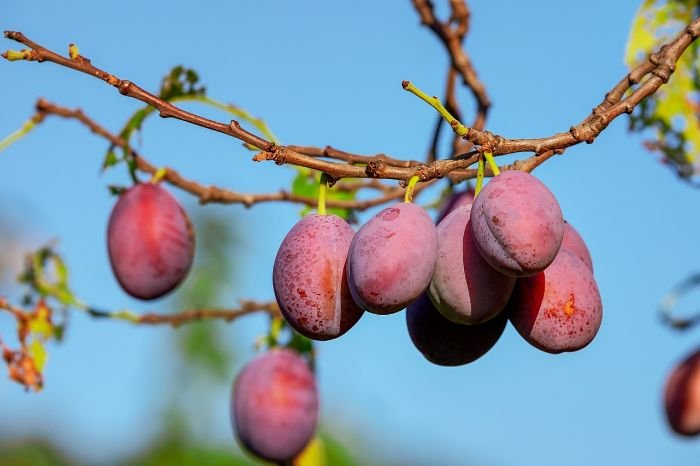
Harvesting Techniques
There are ways to pick plums. You can twist the fruit off the branch or cut it with clean shears. Be careful not to hurt the branch or the fruit when you pick them.
Storing and Preserving Plums
Keep your plums fresh by storing them right. Put them in the fridge to keep them fresh longer. Use a bag with holes to let air in. For longer storage, you can freeze or dry them. Freezing is easy: just wash, pit, and slice the fruit, then put it in a freezer bag. Drying can be done with a dehydrator or by air drying until they’re dry.
Delicious Plum Recipes to Try
Plums are tasty on their own and in many dishes. Here are some recipes to try:
- Plum Jam – Spread this sweet and tangy jam on toast or use it as a topping for pancakes.
- Plum Tart – Enjoy the combination of buttery pastry and juicy plum slices in this delightful dessert.
- Plum Crumble – A warm and comforting dessert made with baked plums topped with a crunchy crumbly topping.
- Plum Salsa – Add a burst of flavor to grilled meats or tacos with a vibrant plum salsa.
Try these recipes or be creative in the kitchen with your plums.
Conclusion – Enjoy the Nutritional Benefits of Homegrown Plums
Homegrown plums let you enjoy fresh, pesticide-free fruit and the joy of growing your own food. This article shows you how to grow plum trees. They give you lots of plums full of vitamins, minerals, and antioxidants.
Adding homegrown plums to your meals boosts your health and happiness. They are high in fiber, which helps your digestion. They also have lots of vitamins and minerals that keep your body working right. Plus, their antioxidants fight off bad free radicals, protecting your cells.
Homegrown plums taste amazing and are great for cooking. You can eat them fresh, put them in salads, make preserves, or add them to many dishes. Growing and eating plums from your garden is a fun way to enjoy the taste of your own fruit.
Why not start growing your own plums? Plant and care for your plum trees to enjoy the many benefits of homegrown plums. Start today and enjoy the delicious and nutritious plums from your garden.
FAQ
How do plums promote digestive health?
Plums are full of fiber. This fiber makes your stool bulkier and helps you go to the bathroom regularly. It stops constipation.
What vitamins and minerals do plums contain?
Plums have lots of important vitamins and minerals. These include vitamin C, vitamin A, potassium, and manganese.
How do plums protect against diseases?
Plums are full of antioxidants like anthocyanins. These protect against harmful stress and lower the risk of chronic diseases.
What are the ideal soil and climate conditions for growing plum trees?
Plum trees do well in soil that drains well and gets a lot of sunlight. Pick a spot that has good air flow and protects from strong winds.
How can I prevent and treat diseases in plum trees?
Keep things clean, check on your trees often, and treat them quickly if they get sick. This stops diseases like brown rot and plum pox virus.






